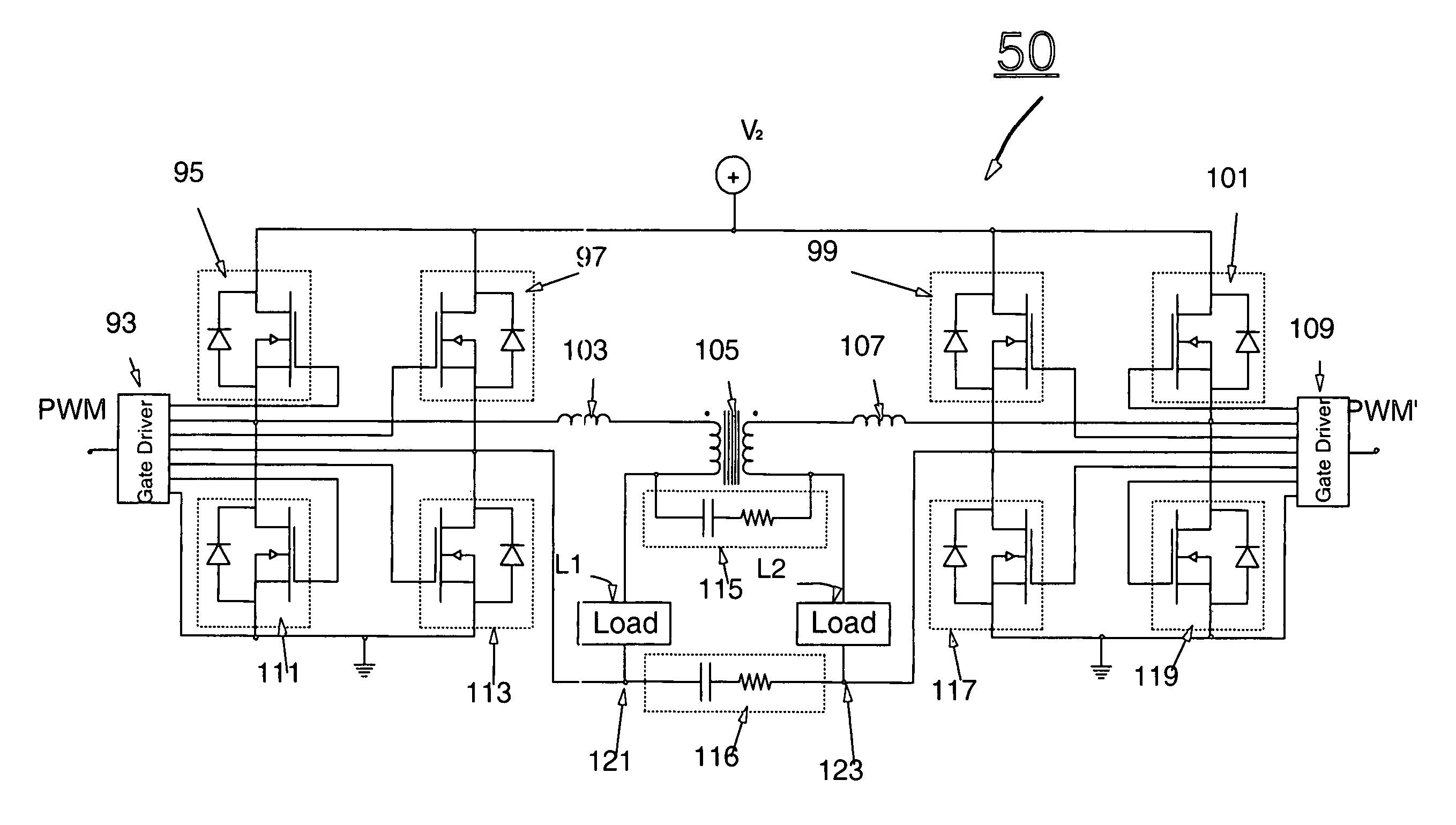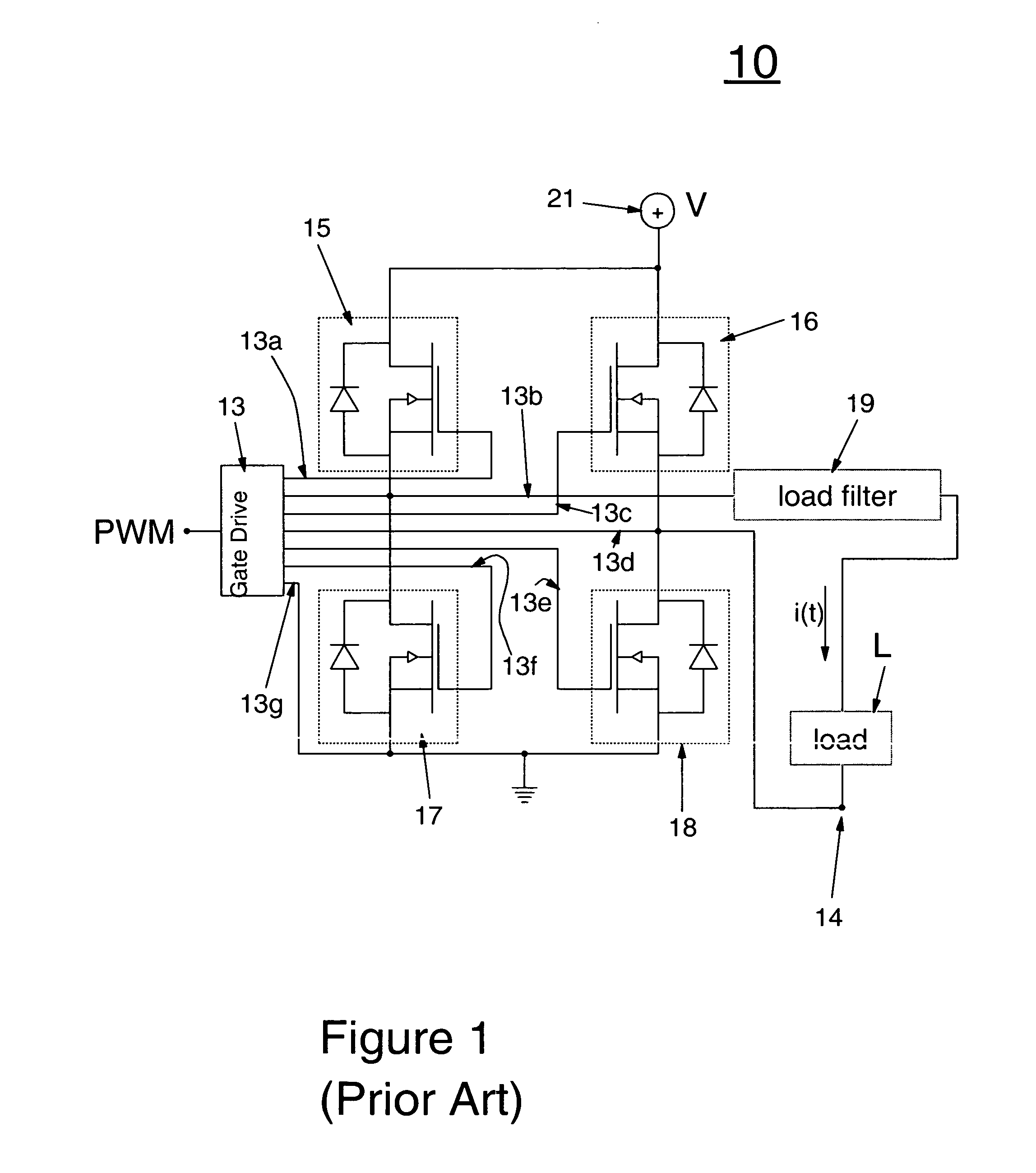Switching amplifier for driving reactive loads
a technology of reactive load and switching amplifier, which is applied in the direction of amplifiers with semiconductor devices/discharge tubes, generators/motors, negative-feedback circuit arrangements, etc., can solve the problems of requiring 40 rails, low power dissipation, and large physical space occupied by storage capacitors, so as to reduce the energy storage requirements of power supplies and reduce the effect of ripple-current smoothing ability
- Summary
- Abstract
- Description
- Claims
- Application Information
AI Technical Summary
Benefits of technology
Problems solved by technology
Method used
Image
Examples
Embodiment Construction
les of the invention using complementary N channel FETs and P channel FETs;
[0032]FIG. 4B is a circuit diagram of a switching amplifier similar to that shown in FIG. 4A but using only N channel FETs;
[0033]FIGS. 5A and 5B show the magnitude of the Fourier coefficients of various switching signal waveforms, useful in explaining the principles of the present invention;
[0034]FIG. 6A is an example of a balanced piezoelectric stack actuator that can be driven by a switching amplifier embodying the principles of the present invention, the stacks being mechanically in parallel;
[0035]FIG. 6B is an example of a balanced piezoelectric stack actuator that can be driven by a switching amplifier embodying the principles of the present invention, the stacks being mechanically in series;
[0036]FIG. 7 is a balanced dual H-bridge switching amplifier embodying the principles of the invention;
[0037]FIG. 8 is a three-phase balanced amplifier embodying the principles of the invention using half-bridge swit...
PUM
 Login to View More
Login to View More Abstract
Description
Claims
Application Information
 Login to View More
Login to View More - R&D
- Intellectual Property
- Life Sciences
- Materials
- Tech Scout
- Unparalleled Data Quality
- Higher Quality Content
- 60% Fewer Hallucinations
Browse by: Latest US Patents, China's latest patents, Technical Efficacy Thesaurus, Application Domain, Technology Topic, Popular Technical Reports.
© 2025 PatSnap. All rights reserved.Legal|Privacy policy|Modern Slavery Act Transparency Statement|Sitemap|About US| Contact US: help@patsnap.com



